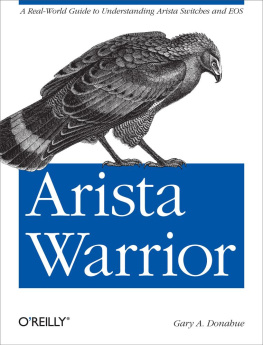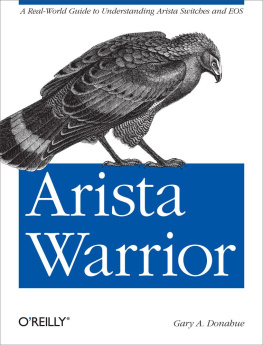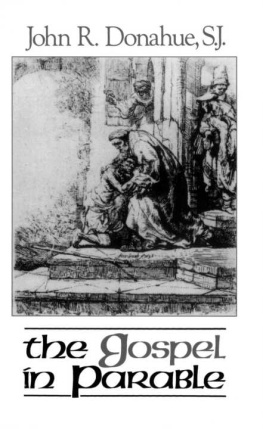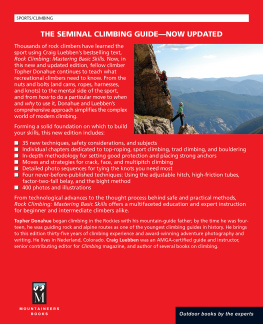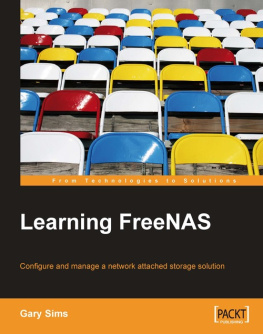Gary A. Donahue - Network Warrior, 2nd Edition
Here you can read online Gary A. Donahue - Network Warrior, 2nd Edition full text of the book (entire story) in english for free. Download pdf and epub, get meaning, cover and reviews about this ebook. year: 2011, publisher: OReilly Media, genre: Computer / Science. Description of the work, (preface) as well as reviews are available. Best literature library LitArk.com created for fans of good reading and offers a wide selection of genres:
Romance novel
Science fiction
Adventure
Detective
Science
History
Home and family
Prose
Art
Politics
Computer
Non-fiction
Religion
Business
Children
Humor
Choose a favorite category and find really read worthwhile books. Enjoy immersion in the world of imagination, feel the emotions of the characters or learn something new for yourself, make an fascinating discovery.

- Book:Network Warrior, 2nd Edition
- Author:
- Publisher:OReilly Media
- Genre:
- Year:2011
- Rating:3 / 5
- Favourites:Add to favourites
- Your mark:
- 60
- 1
- 2
- 3
- 4
- 5
Network Warrior, 2nd Edition: summary, description and annotation
We offer to read an annotation, description, summary or preface (depends on what the author of the book "Network Warrior, 2nd Edition" wrote himself). If you haven't found the necessary information about the book — write in the comments, we will try to find it.
Network Warrior, 2nd Edition — read online for free the complete book (whole text) full work
Below is the text of the book, divided by pages. System saving the place of the last page read, allows you to conveniently read the book "Network Warrior, 2nd Edition" online for free, without having to search again every time where you left off. Put a bookmark, and you can go to the page where you finished reading at any time.
Font size:
Interval:
Bookmark:
Copyright 2011 Gary Donahue
OReilly books may be purchased for educational, business, or sales promotional use. Online editions are also available for most titles (.
Nutshell Handbook, the Nutshell Handbook logo, and the OReilly logo are registered trademarks of OReilly Media, Inc. Network Warrior , the image of a German boarhound, and related trade dress are trademarks of OReilly Media, Inc.
Many of the designations used by manufacturers and sellers to distinguish their products are claimed as trademarks. Where those designations appear in this book, and OReilly Media, Inc. was aware of a trademark claim, the designations have been printed in caps or initial caps.
While every precaution has been taken in the preparation of this book, the publisher and author assume no responsibility for errors or omissions, or for damages resulting from the use of the information contained herein.

The examples used in this book are taken from my own experiences, as well as from the experiences of those with or for whom I have had the pleasure of working. Of course, for obvious legal and honorable reasons, the exact details and any information that might reveal the identities of the other parties involved have been changed.
Cisco equipment is used for the examples within this book and, with very few exceptions, the examples are TCP/IP-based. You may argue that a book of this type should include examples using different protocols and equipment from a variety of vendors, and, to a degree, that argument is valid. However, a book that aims to cover the breadth of technologies contained herein, while also attempting to show examples of these technologies from the point of view of different vendors, would be quite an impractical size. The fact is that Cisco Systems (much to the chagrin of its competitors, Im sure) is the premier player in the networking arena. Likewise, TCP/IP is the protocol of the Internet, and the protocol used by most networked devices. Is it the best protocol for the job? Perhaps not, but it is the protocol in use today, so its what Ive used in all my examples. Not long ago, the Cisco CCIE exam still included Token Ring Source Route Bridging, AppleTalk, and IPX. Those days are gone, however, indicating that even Cisco understands that TCP/IP is where everyone is heading. I have included a chapter on IPv6 in this edition, since it looks like were heading that way eventually.
WAN technology can include everything from dial-up modems (which, thankfully, are becoming quite rare) to T1, DS3, SONET, MPLS, and so on. We will look at many of these topics, but we will not delve too deeply into them, for they are the subject of entire books unto themselvessome of which may already sit next to this one on your OReilly bookshelf.
Again, all the examples used in this book are drawn from real experiences, most of which I faced myself during my career as a networking engineer, consultant, manager, and director. I have run my own company and have had the pleasure of working with some of the best people in the industry. The solutions presented in these chapters are the ones my teams and I discovered or learned about in the process of resolving the issues we encountered.
I faced a very tough decision when writing the second edition of this book. Should I keep the CatOS commands or discard them in favor of newer Nexus NX-OS examples? This decision was tough not only because my inclusion of CatOS resulted in some praise from my readers, but also because as of this writing in early 2011, Im still seeing CatOS switches running in large enterprise and ecommerce networks. As such, I decided to keep the CatOS examples and simply add NX-OS commands.
I have added many topics in this book based mostly on feedback from readers. New topics include Cisco Nexus, wireless, MPLS, IPv6, and Voice over IP (VoIP). Some of these topics are covered in depth, and others, such as MPLS, are purposely light for reasons outlined in the chapters. Topics such as Nexus and VoIP are vast and added significantly to the page count of an already large and expensive book. I have also removed the chapters on server load balancing, both because I was never really happy with those chapters and because I could not get my hands on an ACE module or appliance in order to update the examples.
On the subject of examples, I have updated them to reflect newer hardware in every applicable chapter. Where I used 3550 switches in the first edition, I now use 3750s. Where I used PIX firewalls, I now use ASA appliances. I have also included examples from Cisco Nexus switches in every chapter that I felt warranted them. Many chapters therefore have examples from Cat-OS, IOS, and NX-OS. Enjoy them, because I guarantee that CatOS will not survive into the third edition.
This book is intended for anyone with first-level certification knowledge of data networking. Anyone with a CCNA or equivalent (or greater) knowledge should benefit from this book. My goal in writing Network Warrior is to explain complex ideas in an easy-to-understand manner. While the book contains introductions to many topics, you can also consider it a reference for executing common tasks related to those topics. I am a teacher at heart, and this book allows me to teach more people than Id ever thought possible. I hope you will find the discussions both informative and enjoyable.
I have noticed over the years that people in the computer, networking, and telecom industries are often misinformed about the basics of these disciplines. I believe that in many cases, this is the result of poor teaching or the use of reference material that does not convey complex concepts well. With this book, I hope to show people how easy some of these concepts are. Of course, as I like to say, Its easy when you know how, so I have tried very hard to help anyone who picks up my book understand the ideas contained herein.
If you are reading this, my guess is that you would like to know more about networking. So would I! Learning should be a never-ending adventure, and I am honored that you have let me be a part of your journey. I have been studying and learning about computers, networking, and telecom for the last 29 years, and my journey will never end.
This book does not explain the OSI stack, but it does briefly explain the differences between hubs, switches, and routers. You will need to have a basic understanding of what Layer 2 means as it relates to the OSI stack. Beyond that, this book tries to cover it all, but not like most other books.
This book attempts to teach you what you need to know in the real world. When should you choose a Layer-3 switch over a Layer-2 switch? How can you tell if your network is performing as it should? How do you fix a broadcast storm? How do you know youre having one? How do you know you have a spanning tree loop, and how do you fix it? What is a T1, or a DS3 for that matter? How do they work? In this book, youll find the answers to all of these questions and many, many more. I tried to fill this book with information that many network engineers seem to get wrong through no fault of their own. Network Warrior includes configuration examples from real-world events and designs, and is littered with anecdotes from my time in the fieldI hope you enjoy them .
The following typographical conventions are used in this book:
Font size:
Interval:
Bookmark:
Similar books «Network Warrior, 2nd Edition»
Look at similar books to Network Warrior, 2nd Edition. We have selected literature similar in name and meaning in the hope of providing readers with more options to find new, interesting, not yet read works.
Discussion, reviews of the book Network Warrior, 2nd Edition and just readers' own opinions. Leave your comments, write what you think about the work, its meaning or the main characters. Specify what exactly you liked and what you didn't like, and why you think so.

